An overwhelming amount of art, fashion, architecture, and furnishings are on display at the annual Milan Design Week in Italy, the world’s largest design event. Our focus, as always, is on the 3D printed items.
Dominating this year’s batch are various forms of 3D printed ceramics aiming to meld modern technology with the centuries-old art of pottery for practical and beautiful purposes.
The next most represented form of 3D printing is furniture. Several design firms are approaching 3D printed chairs, tables, and accessories with an eye toward sustainability and incorporating recycled materials.
Although these examples below are not all of the design examples in Milan this year that incorporate 3D printing, they are the ones that make the biggest statement about design innovations through 3D printing. Enjoy!

(Above) On display in Milan are the 2023 winners of the Lexus Design Award. One of which is this creation that is both functional and beautiful as well as sustainable. Designed by Jiaming Liu, “Print Clay Humidifier” is a non-electric room humidifier 3D printed using recycled ceramic waste. The recycled ceramic powder and uniquely shaped construction increase water absorption. From 2,068 entries from 63 countries and regions around the world, four winners were chosen by the judges.
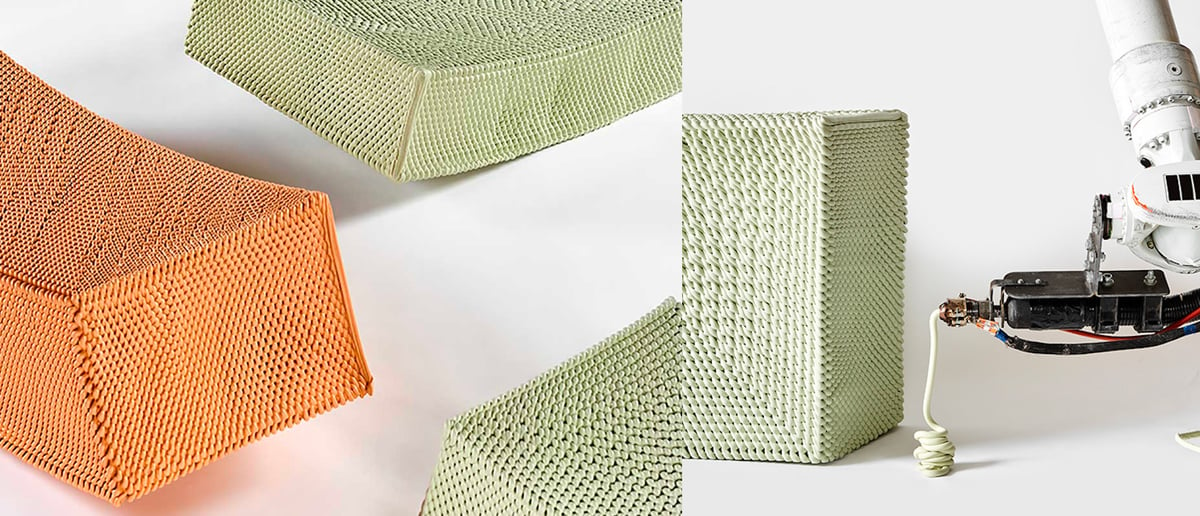
(Above) Aptly named “Knotty,” is a collection of playful benches with a bold and tactile texture from Belgium-based firm The New Raw. Inspired by knitting techniques and looking far softer than they are, the project treats plastic waste as a continuous thread of material that folds, twists, and loops to create an intriguing surface.
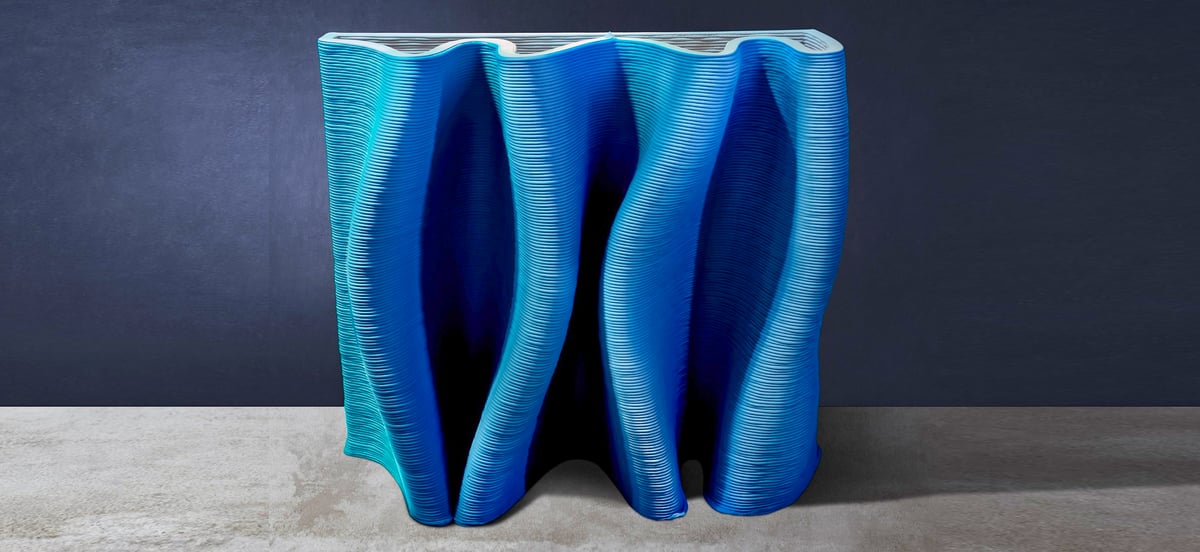
(Above) Combining “handicraft know-how” with new technologies, terracotta tile maker Unuslab’s collaboration with Fluente Design resulted in works that showcase the practical and artistic application of 3D printed clay. This “Terre Evolve” is a concept piece inspired by the beauty of nature, the company says.
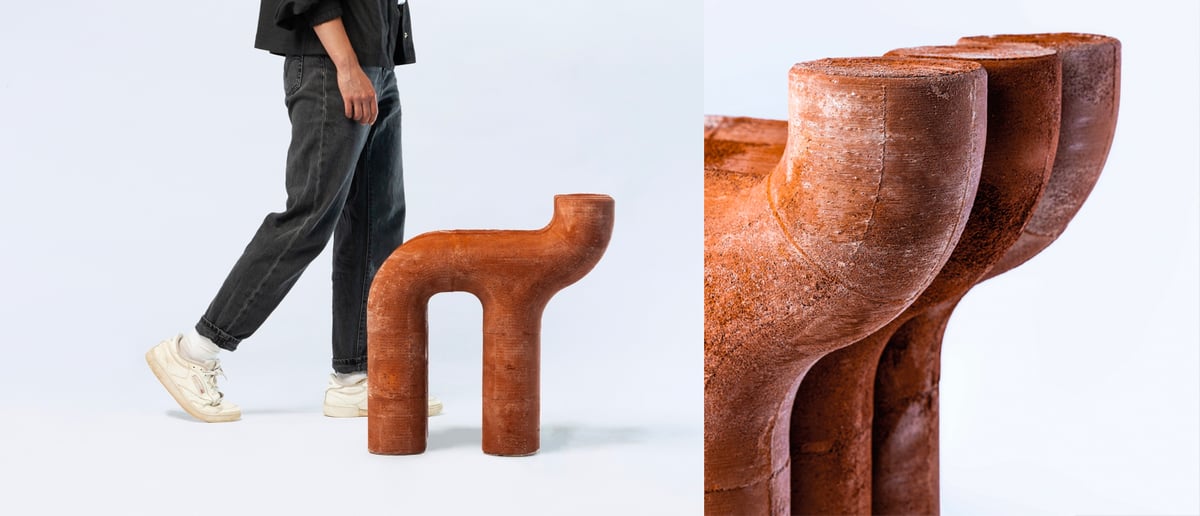
(Above) Hoping to make research more accessible through design, Julia Huhnholz and Friedrich Gerlach wrote their master’s thesis on bio-cement, which involves using bacteria to bind together recycled bricks with calcium carbonate. Using 3D printing, the pair chose to make innovative forms, including this chair, consisting of three individually manufactured pieces, which won them a place on the best of the one&twenty international competition award list and a spot at the Milan Design Week.
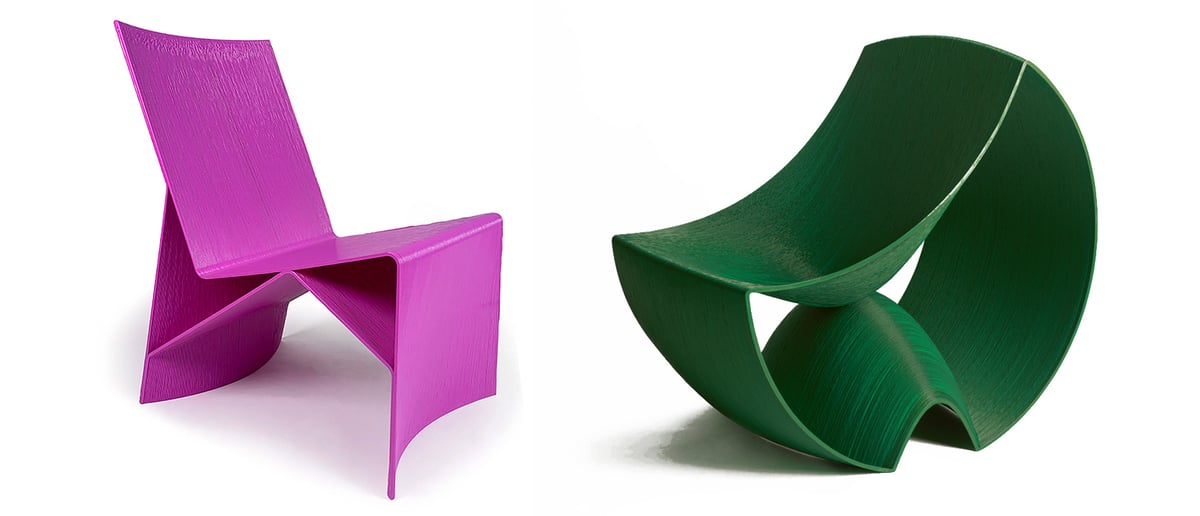
(Above) Medaarch, the multidisciplinary design firm, has three 3D printed chairs on display in Milan, the Lissa, the Pantelleria, and the Capri. The Pantelleria is inspired by the slender structures of nature, the design firm says. Pantelleria is part of the Mediterranea design collection that’s meant to represent the encounter between digital manufacturing and an elegant aesthetic built with the typical colors and shapes of the Mediterranean.
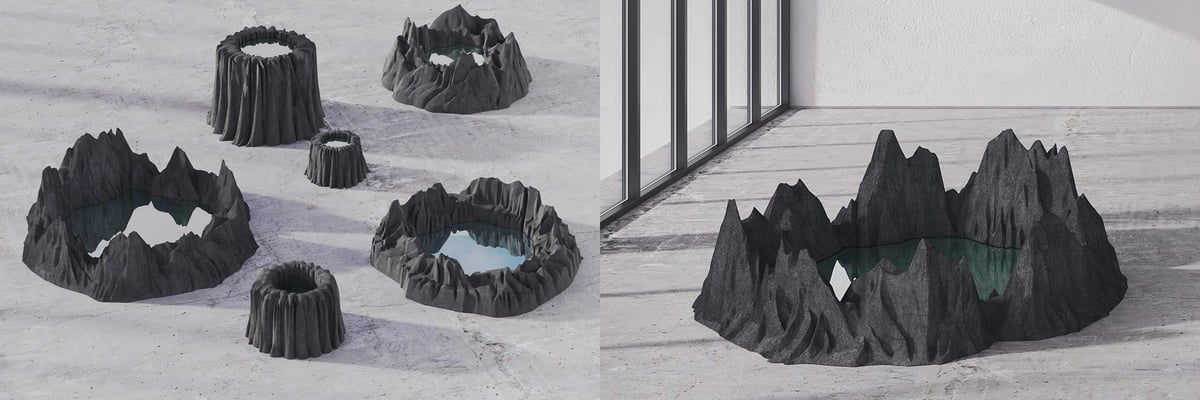
(Above) Interior architect and designer Richard Yasmine paired up with 5vie Milano to present the ‘Silent Hollows”, a collection of 3D printed organic forms that imitate hollowed volcanoes. The 3D printed installation combines immersive VR and music produced from each viewer’s biometric data translated into sound.
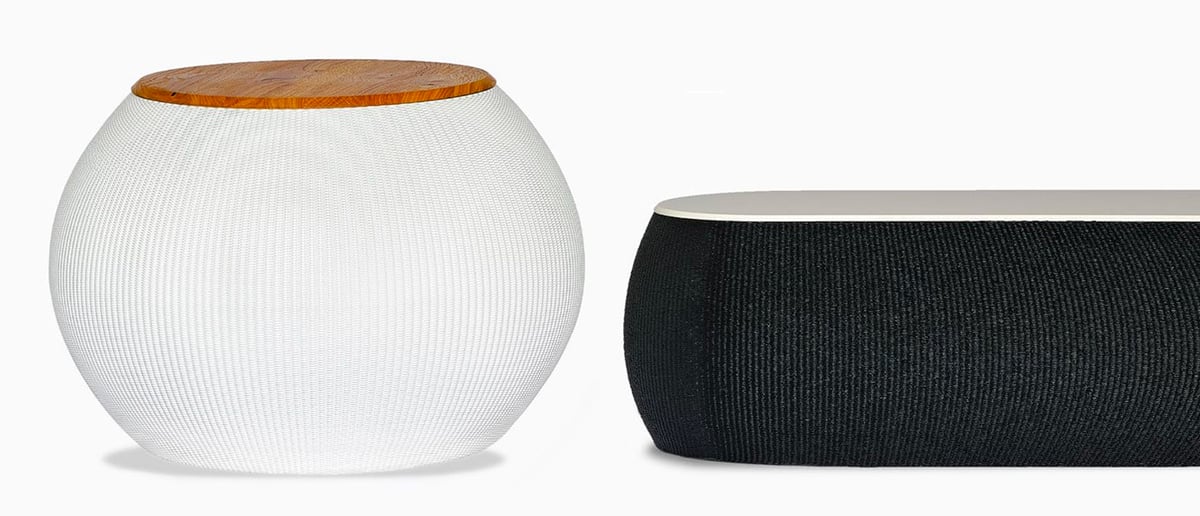
(Above) Elli Design, the Italian furniture firm, turned to Caracol AM to 3D print these “beautiful shapes with a purpose.” Either chairs, ottomans, or tables, these pieces are made from recycled plastics and are fully recyclable once they reach the end of their life cycle, the company says.
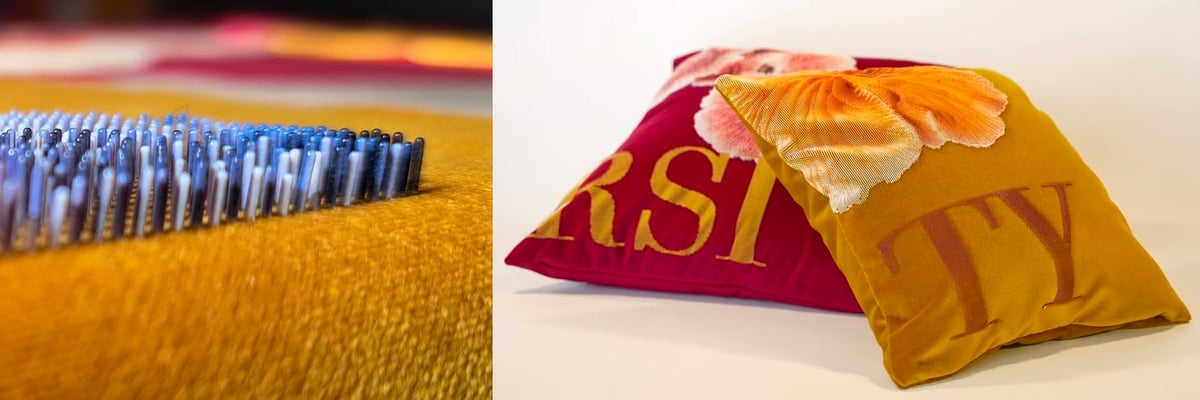
(Above) Italian pillow start-up Atelier des Refusés makes gorgeous cushions from some of the most luxurious fabrics available, which happened to be scraps discarded by the world’s best textile companies that are too small to make into anything else. The items on display at the Milan Design Week have a special added feature: 3D printing applied by the Stratasys J850 TechStyle textile 3D printer.
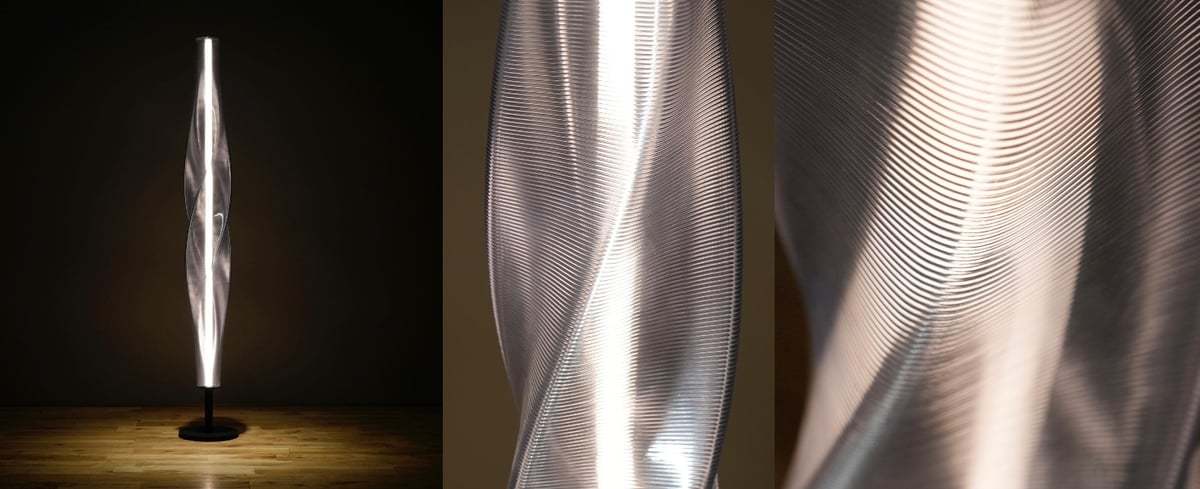
(Above) Japanese 3D printing design firm Sekisai displays several 3D printed creations, including this standing lamp. The company is also displaying products made from its “Phantasmagorical Skin” in Milan, which is a visually dynamic 3D printed material that seems to change color when viewed from different angles. Its pleated texture, printed in three hues simultaneously extruded from a single 3D-printer nozzle, creates this illusion of iridescence.
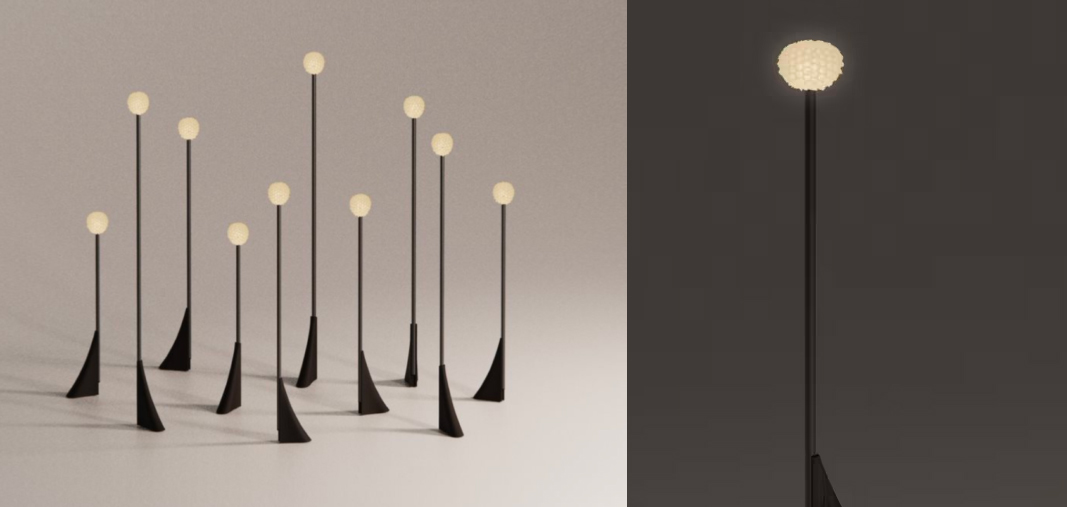
(Above) The latest work from designer Gabriel Tan showcases lamps with 3D printed shades that strive to evoke a sense of hope and poignancy, the artist says. The “Aiming for Peace” collection of floor and pendant lamps features an ash wood base derived from furniture production offcuts, a recycled steel pipe stem, and a 3D-printed lampshade made from recycled plastic. The lamps also use a low-energy 2.5W LED source.
License: The text of "The Best of 3D Printing at Milan Design Week 2023" by All3DP Pro is licensed under a Creative Commons Attribution 4.0 International License.